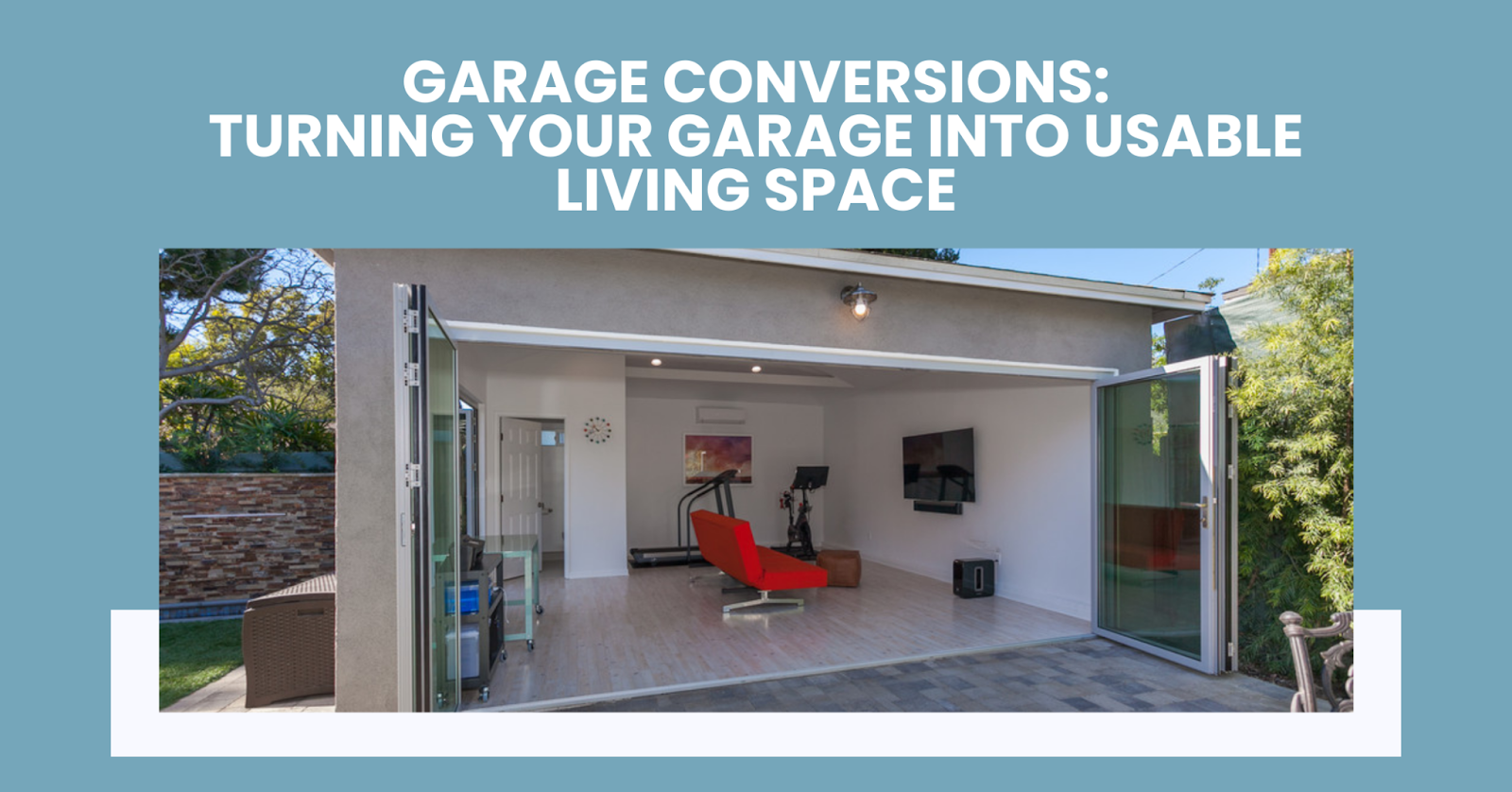A few years ago, Tom and his family had a problem that many homeowners face: their garage was filled with boxes, old furniture, and tools, taking up valuable space in their home. Despite having a two-car garage, they rarely used it for their cars due to the clutter. The family was in dire need of additional living space, but they didn’t want to go through the hassle of a full home expansion.
One day, Tom came across a garage conversion idea that piqued his interest. The concept seemed like the perfect solution: transform the garage into a multi-functional space that added significant value to their home. After some research and planning, Tom and his family successfully converted their garage into a cozy home office and guest room, solving their space issue and enhancing the overall livability of their home.
If you’ve been struggling with limited space in your home, a garage conversion might be the perfect solution for you. This article will explore garage conversion ideas that can add functional, stylish additional living space to your home without the need for a major renovation.
Why Consider a Garage Conversion?
When considering a home expansion, many homeowners think about adding new rooms or building extensions. However, this can be expensive and time-consuming. Converting your garage offers a more cost-effective way to create usable space in your home, especially if the garage is underutilized.
Besides the obvious benefit of additional living space, converting your garage can increase your home’s value and improve its functionality. Whether you’re in need of an extra bedroom, a home office, or a playroom for the kids, a well-designed garage conversion can serve multiple purposes and blend seamlessly with the rest of your home’s aesthetic.
Step 1: Assessing Your Garage’s Potential
Before jumping into a garage conversion, it’s important to assess the space and understand its limitations and possibilities. Not every garage is suitable for conversion, and some will require more work than others. Consider the following factors:
- Size and Layout: Measure the available space and determine how much usable area you have to work with. A two-car garage typically offers 400 to 500 square feet, which is enough for a small home office, guest room, or even a mini gym.
- Structural Integrity: Confirm that the structure of the garage is solid enough for the conversion. This includes checking the foundation, walls, and roof to make sure they can support new installations such as insulation, drywall, and flooring.
- Permits and Zoning: Depending on your location, you may need permits to convert your garage. Check local zoning laws and building codes to confirm your home expansion complies with regulations.
Step 2: Planning Your Garage Conversion
Once you’ve assessed the garage and confirmed it’s ready for conversion, the next step is to plan how you’ll transform it into additional living space. Here are some of the most popular garage conversion ideas to consider:
1. Home Office
If you’re working from home or need a quiet space for work, converting your garage into a home office is a fantastic idea. The quiet, private environment of a garage makes it ideal for focusing and increasing productivity. A well-insulated, temperature-controlled garage office can also keep you comfortable year-round.
2. Guest Room
Turning your garage into a guest room can provide extra accommodation for family members or visitors. This is particularly helpful if you frequently host overnight guests but don’t have an extra bedroom. A cozy guest room with a comfortable bed, good lighting, and minimal furniture can be a welcoming retreat for visitors.
3. Gym or Fitness Studio
With more people focusing on health and wellness, a garage conversion into a home gym has become a popular trend. You can add exercise equipment, a sound system, and mirrors to create a functional workout space. Plus, having a gym right at home means you can work out on your schedule without leaving the house.
4. Entertainment Room
A converted garage can also be turned into an entertainment space for movie nights or social gatherings. Add a large screen, comfortable seating, and surround sound to create the perfect environment for relaxation. You could even add a wet bar for an added touch of luxury.
5. Playroom for Kids
For families with children, a garage conversion into a playroom can help free up space in the main living areas while providing kids with a dedicated area to play. Soft flooring, colorful decor, and storage for toys and games will make it both functional and fun.
Step 3: The Conversion Process
After you’ve decided on the type of additional living space you want to create, the next step is the conversion process itself. Here’s an overview of the major steps involved:
1. Insulation and Climate Control
One of the most important parts of a garage conversion is ensuring the space is comfortable year-round. Most garages lack proper insulation, which can make them cold in winter and unbearably hot in summer. Adding insulation to the walls, ceiling, and floors can help regulate the temperature. You may also want to install heating and cooling systems, such as a space heater or mini-split air conditioning unit.
2. Flooring
Garage floors are often made of concrete, which is durable but not ideal for living spaces. Consider adding new flooring, such as hardwood, laminate, or carpet, to create a more inviting and comfortable atmosphere.
3. Electrical and Lighting
Most garages have minimal electrical outlets and lighting. During the conversion, you’ll need to upgrade the electrical system to include sufficient outlets for your needs, whether that’s for lighting, electronics, or appliances. Additionally, installing recessed lighting or pendant lights can brighten up the space and make it more welcoming.
4. Walls and Ceilings
Garages typically have unfinished walls and ceilings, which means you’ll need to add drywall and paint to make the space feel like a real room. You can choose paint colors that match the rest of your home’s aesthetic or go for something bold and creative.
5. Windows and Doors
Depending on your design, you may want to add new windows to let in natural light. This is especially important if you’re converting the garage into a living space, such as an office or guest room. You may also need to install a new door, particularly if you’re changing the garage’s primary entry point.
Step 4: Design and Decor
The final step in the garage conversion process is designing and decorating the space to suit your needs and style. Consider the following tips:
- Storage Solutions: Make sure to include adequate storage, especially if the conversion is multi-functional. Built-in shelves or cabinets can help keep the space organized.
- Furniture and Layout: Choose furniture that suits the purpose of the space. A small desk for an office, a comfy sofa for a guest room, or a few workout machines for a gym.
- Lighting and Accessories: Add lighting fixtures that create the right atmosphere and choose decor that complements the room’s purpose. For example, soft rugs and throw pillows can make a guest room cozy, while sleek furniture and a minimalist design work well in an office.
FAQs
What is the cost of a garage conversion?
The cost of converting a garage varies based on its size and the type of conversion you want. On average, homeowners spend between $10,000 and $30,000 on a conversion project.
Do I need a permit for a garage conversion?
Yes, most regions require a permit for a garage conversion to confirm the changes comply with local building codes and zoning regulations.
How long does it take to convert a garage?
The time frame for a garage conversion typically ranges from 4 to 6 weeks, depending on the complexity of the project and availability of materials.
Can I convert my garage into a rental unit?
In some areas, you can convert your garage into a rental unit, but you must check local zoning laws and building codes to confirm it meets the requirements for residential living.
Is it better to convert my garage or build an extension?
Converting a garage is often more cost-effective and quicker than building an extension. However, it depends on your budget, space needs, and long-term goals.
Conclusion
A garage conversion offers a unique solution for homeowners in need of additional living space. Whether you’re looking to create a home office, guest room, or fitness studio, transforming your garage into a functional area can add significant value and comfort to your home. With the right planning, design, and professional help, your garage can become a space that suits your needs and improves your home’s overall appeal.
Ready to start your garage conversion? Contact us today for expert advice and services to turn your garage into the perfect additional living space.




